Bee bee bee Agastache
One plant that I have dozens of this year -- more than I really want since many of them are still in pots, looking for a place in the ground or a new home -- is Agastache foeniculum, "Anise Hyssop" or "Blue Giant Hyssop". Spicy, minty, sweet leaves smell and taste so delicious, and it flowers forever it seems. Although not everyone agrees on how to pronounce it (I favor "Ag-a-stack-EE", so it rhymes with "bee"), I think most gardeners who grow it do agree on one thing: the pollinators love it.
These plants are bee city right now, and will be all summer long. I can stand and watch the bees for hours, so it's probably a good thing that I don't have more benches in my garden, or I'd be out here all day.
I'll start with the biggest and most noticeable bees: the bumbles and carpenter bees (which look similar). This is a carpenter bee:
Whenever I get a close look at one of their heads, the pitted texture of it always fascinates me:
I'm not sure if the pitted texture creeps me out or not... but I am sure that I love the fuzziness of the thorax! So shaggy!
Here's a bumble bee for comparison:
Notice that the head is hairy, as is the abdomen (which you can't see in this photo). The wing position is different too. I love the texture of these wings!
Besides the big guys, there are many honeybees on these flowers too:
Unfortunately they move so quickly it's often shoot and hope with the camera. I threw out a dozen images just to get these two.
Not sure what this one is:
If you've got a couple of minutes, why not head over to bugguide.net and try to ID this for me? I wrote a post the other day on how I use bugguide to identify insects to help get you started. Once you have the ID, post it in the comments please!
There are plenty of smaller bees too, which are probably the most difficult to photograph.
Not only are they small, but they bury themselves in the blooms so deeply it's hard to see them sometimes.
I did my best though. These are tough to ID too... off to bugguide again!
Although I posted about it the other day, this Eight-spotted Forester moth was back again today:
I couldn't resist getting another photo or two while I had the macro lens handy -- I didn't have it the other day.
One of my neighbors asks me every year if I've seen any bees -- he doesn't see many in his small veggie garden. I gave him a couple of these Agastache plants last year but he doesn't have enough sunlight in his yard to have them thrive.
Too bad, because they really do attract all sorts of wonderful bees (and other insects too).
Note: if you garden in the St. Louis area and are interested in some of these plants, please contact me -- I've got plenty potted up to give away!
.

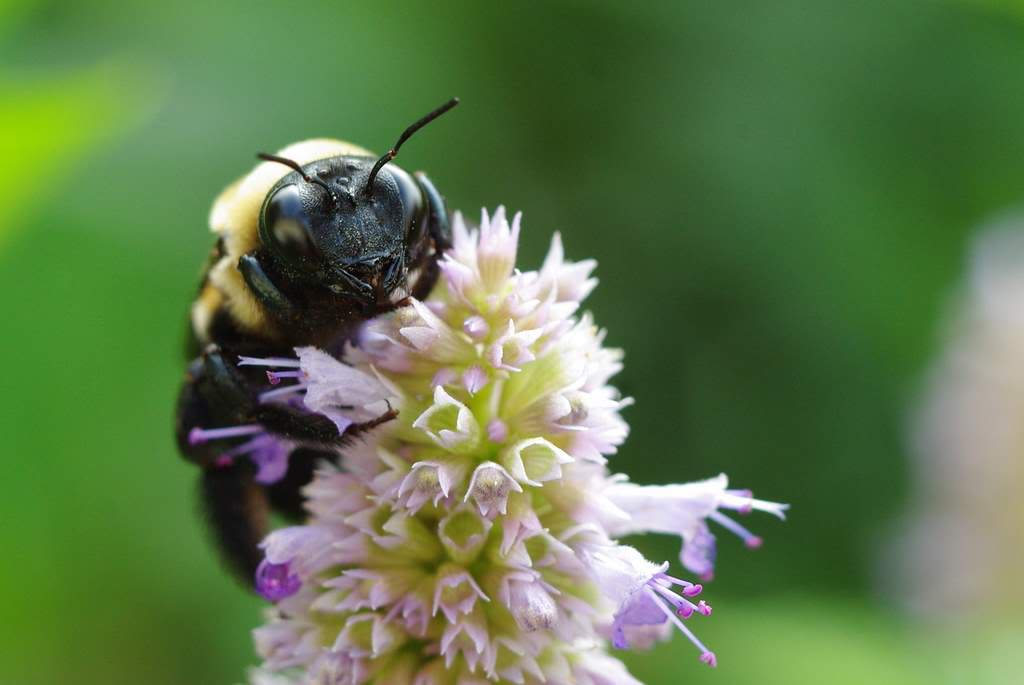





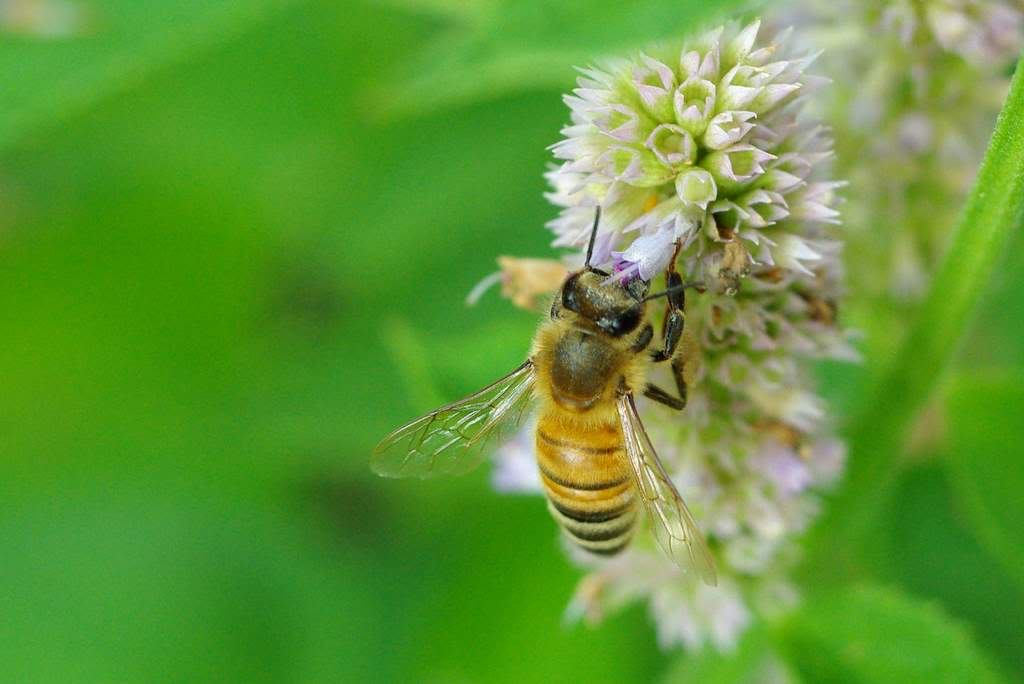
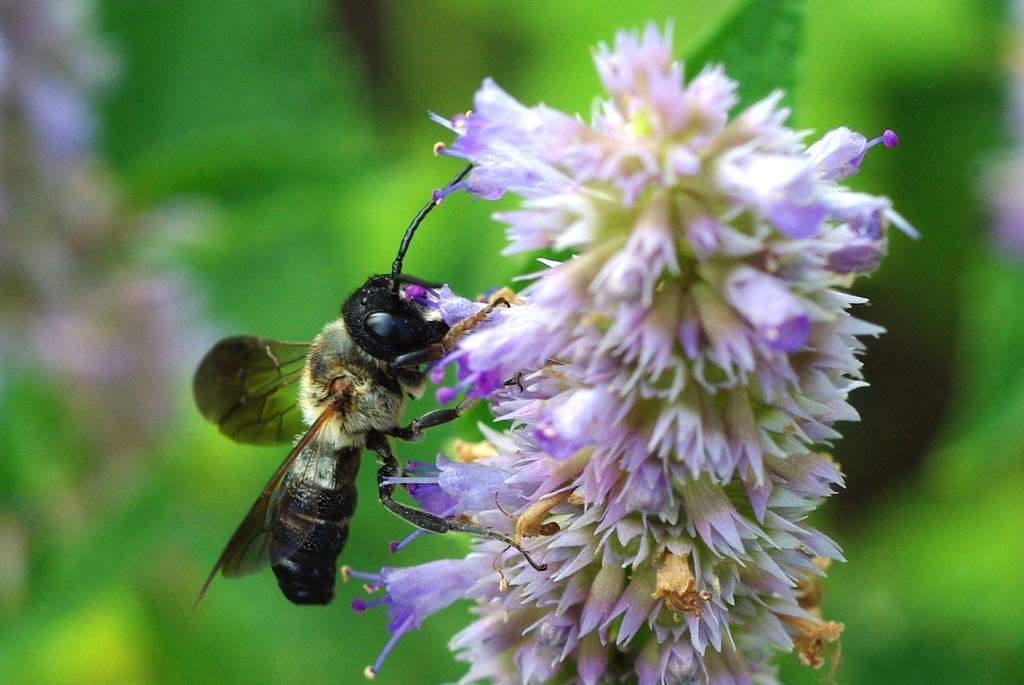
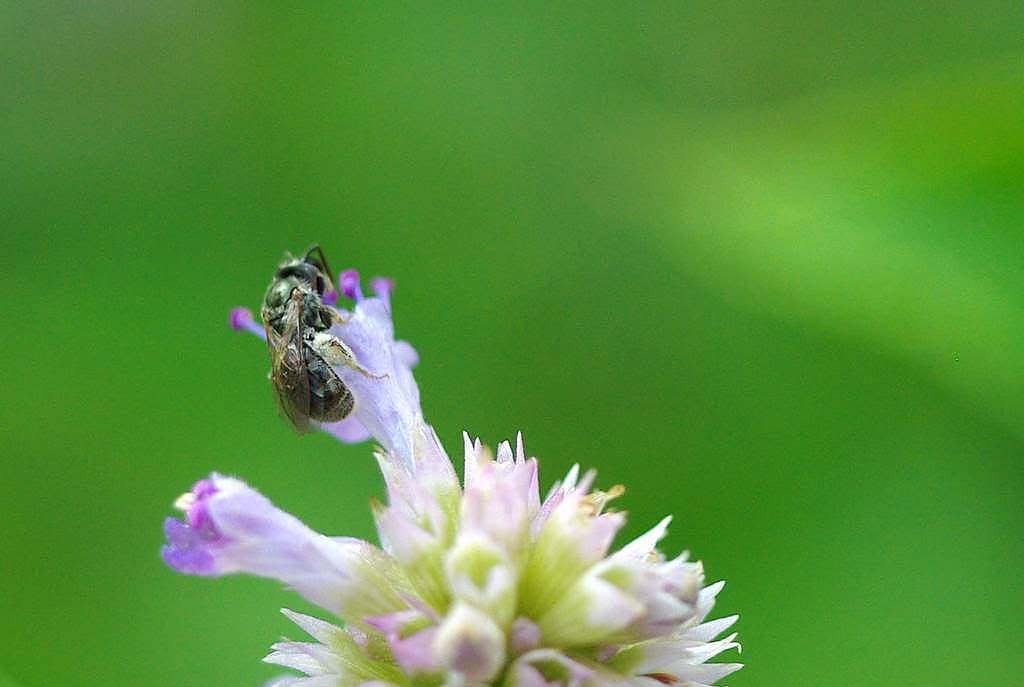
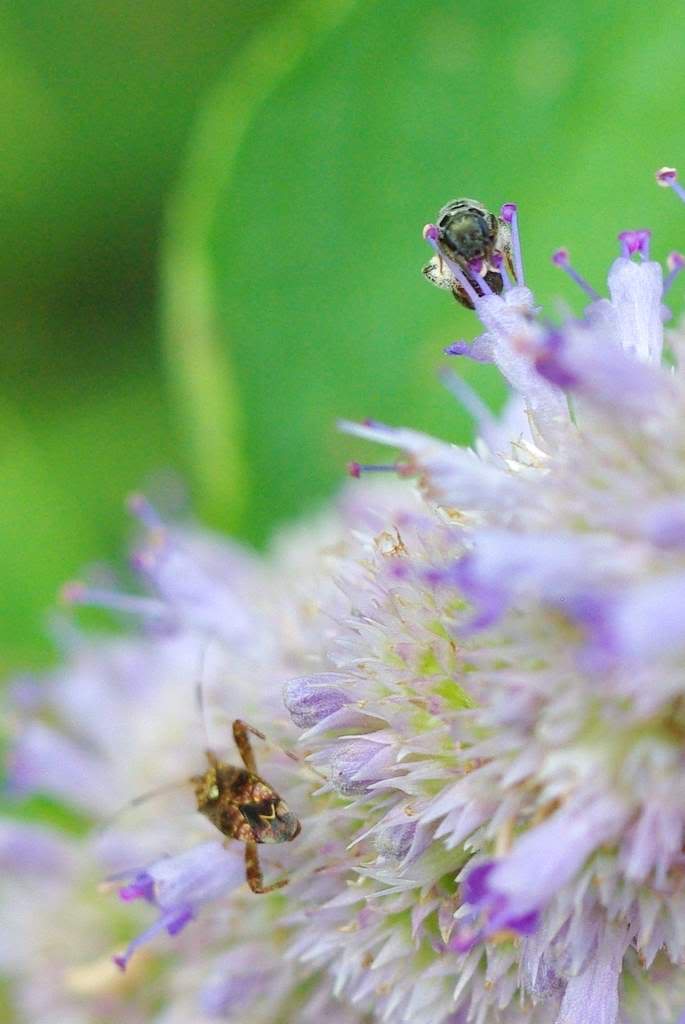






Wow, phenomenal macro images! Bees look quite alien up close, I must say.
Amamazing close-ups of the carpenter bee. What kind of camera do you use?
Janet: Thanks. I still use an older Pentax K200D. My main macro lens is an old manual 50mm lens, but I sometimes use some of my other old manual lenses with extension tubes for macro work.